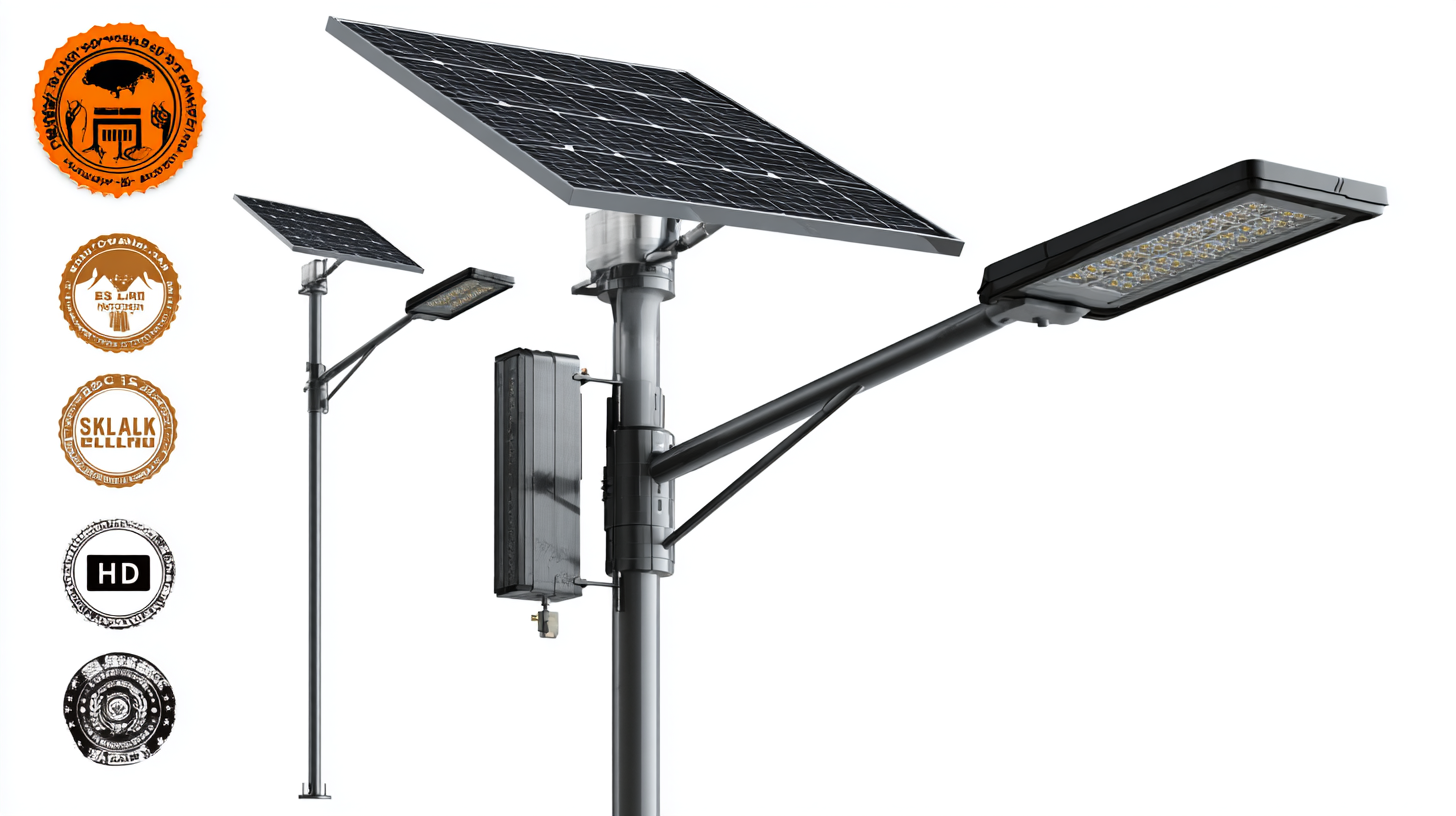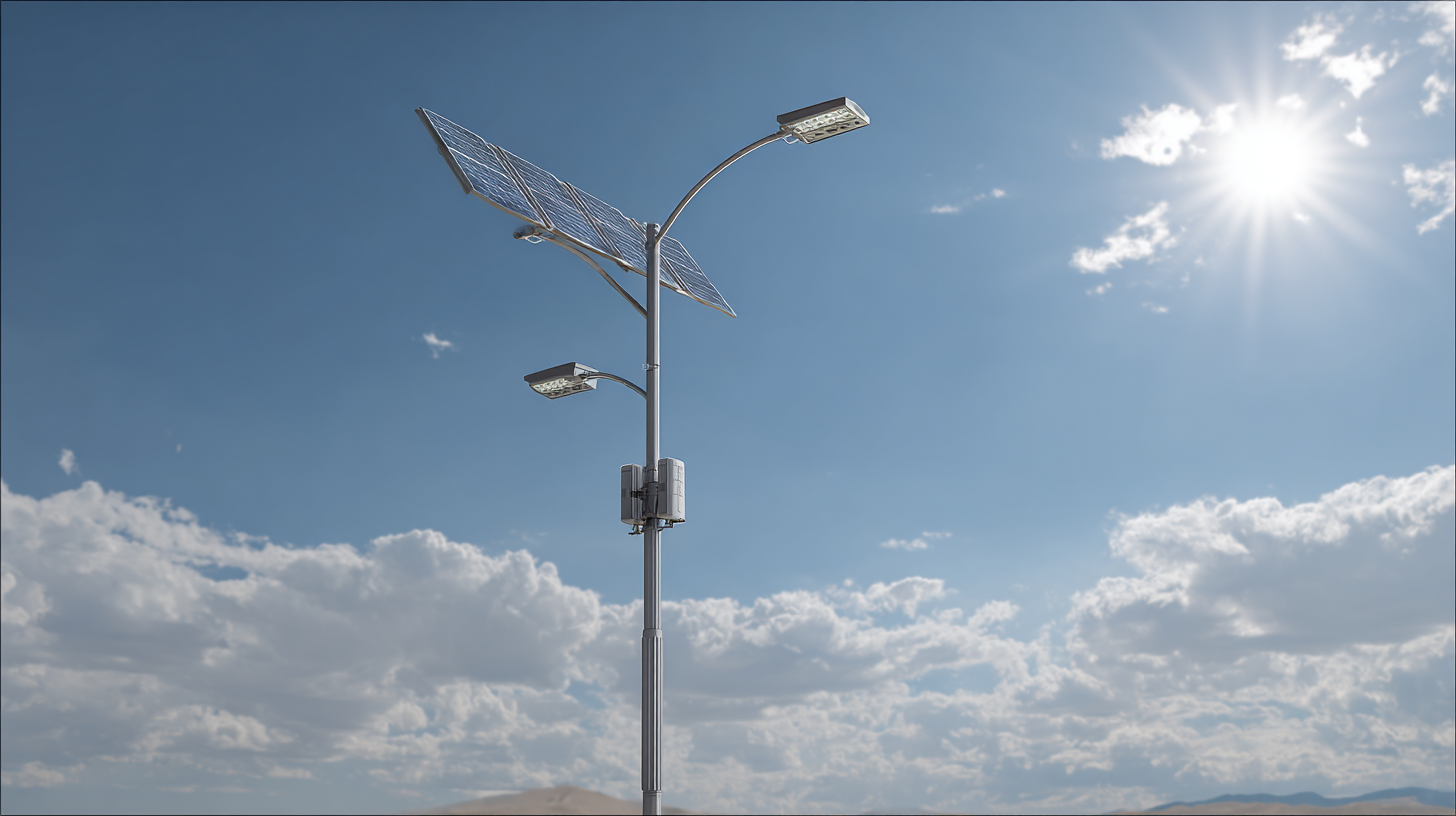Unmatched After Sales Support and Repair Costs for Best Solar Street Light Solutions
As the global demand for renewable energy solutions continues to surge, the solar street light market has emerged as a vital component in sustainable urban development. According to a recent report by Markets and Markets, the solar street lighting market is expected to reach USD 8.5 billion by 2025, growing at a compound annual growth rate (CAGR) of 20.5% from 2020. This growth is driven by the increasing need for energy-efficient lighting solutions and the rising emphasis on reducing carbon footprints in cities worldwide. However, with the rapid advancement in technology, ensuring unmatched after-sales support and managing repair costs has become critical for cities and businesses looking to implement sleek, reliable solar street light solutions. In this blog, we will explore the 2025 technology development trends in the solar street light sector, providing a comprehensive guide to navigating these innovations while securing long-term value and efficiency.

Key Features of Top Solar Street Light Solutions
When selecting the best solar street light solutions, several key features stand out that ensure optimal performance and reliability.
First and foremost, durability is crucial. Top solar street lights are constructed with high-quality materials that can withstand harsh weather conditions, including heavy rain, snow, and extreme temperatures. This durability not only extends the lifespan of the lights but also reduces maintenance costs and the need for frequent replacements.
Another essential feature is energy efficiency. The best solar street lights harness solar power effectively, utilizing advanced photovoltaic panels that convert sunlight into electricity with high efficiency. This means they can operate continuously throughout the night without draining their power reserves. Additionally, smart control systems and motion sensors can enhance energy savings by automating lighting based on the presence of pedestrians or vehicles.
Lastly, unmatched after-sales support and transparent repair costs are vital for any solar lighting solution. Providers that offer comprehensive warranties and responsive customer service ensure that any issues can be promptly addressed, making it easier for users to maintain optimal functionality over the long term. This commitment to customer care, paired with the aforementioned features, makes certain solar street lights stand out as top choices for sustainable outdoor lighting solutions.
Understanding After Sales Support in Solar Street Lighting
After sales support plays a crucial role in the solar street lighting industry, ensuring that customers receive the assistance they need long after the installation process. This support encompasses a variety of services, including maintenance, troubleshooting, and the availability of spare parts, which can significantly influence the long-term performance and reliability of solar street lights. A well-structured after sales support system allows users to address any emerging issues promptly, thus extending the lifespan of their solar lighting solutions.
Moreover, understanding repair costs is essential for making informed purchasing decisions. Different manufacturers offer varying levels of support, and those with robust after sales programs often result in lower overall expenses for the customer. By evaluating factors such as warranty coverage, response times for service requests, and the accessibility of replacement parts, buyers can assess the true value of their investment in solar street lights. Ultimately, a company that prioritizes after sales support not only enhances user satisfaction but also cultivates lasting relationships with clients, reinforcing their commitment to quality and service in the solar industry.
Unmatched After Sales Support and Repair Costs for Best Solar Street Light Solutions
| Model | Warranty Period | Expected Lifetime | Average After Sales Support Response Time | Average Repair Cost |
|---|---|---|---|---|
| Solar Street Light A | 5 years | 10 years | 24 hours | $150 |
| Solar Street Light B | 3 years | 8 years | 48 hours | $200 |
| Solar Street Light C | 4 years | 9 years | 36 hours | $175 |
| Solar Street Light D | 6 years | 12 years | 12 hours | $120 |
Comparing Repair Costs for Different Solar Street Light Models
When considering solar street light solutions, repair costs can significantly impact overall ownership expenses. A recent industry report from the Solar Energy Industries Association (SEIA) indicates that different models can vary dramatically in their repair costs, with some commercially available options costing upwards of 20% more than their competitors. This discrepancy often stems from the quality of components used and manufacturer warranties, making the selection process crucial.
 One key consideration is the LED lifespan and efficiency. High-quality solar street lights typically feature LEDs with a lifespan of 50,000 hours, reducing the frequency of replacements and associated costs. On the other hand, lower-end models might require more frequent repairs and replacements, leading to greater long-term expenses. Always review warranty terms as they often cover parts and labor, potentially saving significant amounts during the light's operational life.
One key consideration is the LED lifespan and efficiency. High-quality solar street lights typically feature LEDs with a lifespan of 50,000 hours, reducing the frequency of replacements and associated costs. On the other hand, lower-end models might require more frequent repairs and replacements, leading to greater long-term expenses. Always review warranty terms as they often cover parts and labor, potentially saving significant amounts during the light's operational life.
Tip: When comparing solar street light models, assess not only the upfront purchase price but also the anticipated repair costs over time. Utilize resources such as the International Institute for Energy Conservation’s database for detailed analyses on specific models. This will help ensure you're making a well-informed decision that balances initial costs with overall affordability.
The Importance of Warranty in Solar Street Light Purchases
When purchasing solar street lights, the importance of warranty cannot be overstated. A robust warranty acts as a safety net, ensuring buyers are protected against potential defects and malfunctions post-purchase. This is especially critical in solar street light solutions, where technological advancements frequently evolve. A good warranty demonstrates the manufacturer’s confidence in their product, providing peace of mind to customers who invest in these energy-efficient lighting systems.

Moreover, considering the repair costs associated with solar street lights is essential for both short-term and long-term budgeting. Without a comprehensive warranty, repair expenses can accumulate quickly, undermining the initial savings achieved through lower energy costs. The latest developments in solar technology highlight the growing trend of consumer awareness regarding after-sales support. Just as prospective buyers need to consider the maintenance implications of electric vehicles, similar scrutiny should apply to solar street lights. In essence, robust warranties and transparent repair cost structures are indispensable in making informed purchasing decisions.
Customer Testimonials: Success Stories with Solar Street Light Solutions
In the realm of solar street light solutions, customer experiences showcase the reliability and efficiency of these systems. According to a recent report by the Solar Energy Industries Association, public investment in solar lighting has surged by 80% over the past five years. This significant increase reflects not only the growing awareness of sustainable energy but also the tangible benefits observed in municipalities across the globe. Many customers have reported substantial reductions in energy costs, with some areas experiencing up to a 40% decrease in their utility bills after switching to solar street lights.
Customer testimonials further emphasize the importance of after-sales support in this sector. One city council shared that their partnership with a leading solar manufacturer provided them not just with innovative products, but also with comprehensive repair services that ensured ongoing functionality. As noted in a recent industry survey, 92% of users ranked after-sales support as their top priority, highlighting how essential it is for long-term customer satisfaction.
**Tip:** When considering solar street lights, research the manufacturer’s warranty and support options to ensure you have access to timely repairs.
Another successful case involved a rural community that improved its public safety by installing solar-powered lights, leading to a 50% drop in nighttime incidents. This underscores the value of maintaining well-lit streets while being environmentally conscious.
**Tip:** Explore customer reviews and testimonials to gauge the real-world effectiveness of solar street light solutions before making a purchase decision.
